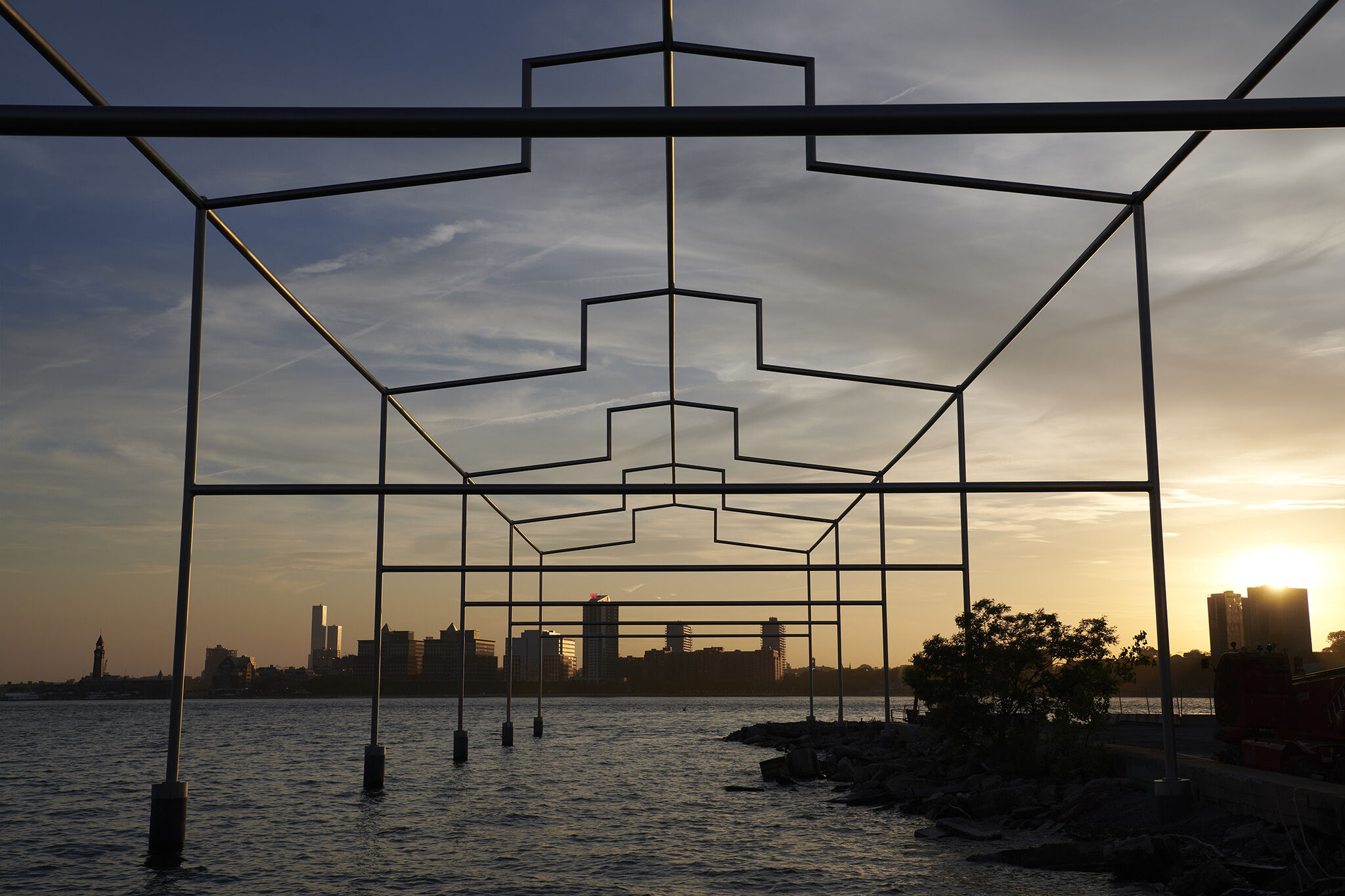David Hammons's Day's End: Highlights from the Groundbreaking
Mar 5, 2020
“David Hammons’s Day’s End, without walls, ceiling, floor, doors, and windows, is open and inviting to all. It is as much a sculpture, a site, a building, a structure—yet none of the above.”
So began the remarks of Adam D. Weinberg, the Whitney’s Alice Pratt Brown Director, at the groundbreaking for a new work by David Hammons: a permanent public sculpture in Hudson River Park along the southern edge of Gansevoort Peninsula, directly across from the Museum.
The event—held in the Susan and John Hess Family Gallery and Theater, overlooking the project site—included a “water tango” on the Hudson performed by the Fire Fighter II, the Fire Department of New York City’s Marine Company 9 fireboat, a dazzling spectacle set against the twilight sky and city skyline. Guests also enjoyed the premiere of the first part of 6 to 5, 5 to 6, a new work by the Pulitzer Prize-winning composer Henry Threadgill commissioned by the Whitney for the occasion.
For Day’s End, Hammons takes inspiration from Gordon Matta-Clark’s 1975 art intervention of the same name. Originally conceived by Matta-Clark as a “sun and water temple,” Day’s End involved the artist cutting a series of large, dramatic openings into the exterior walls and floor of the nineteenth-century salt shed at Pier 52 on the west side of Manhattan, allowing both sunlight and water to be visible from within the abandoned structure. Matta-Clark’s efforts, unfortunately, were short-lived: city inspectors shut down the site the day it was to be presented to the public, and following years of urban decay throughout the area, both pier and shed were demolished in 1979.
Hammons’s new work, a “ghost monument” to Matta-Clark and the vibrant history of New York City’s waterfront, will be a sculpture of remarkable simplicity that traces the outlines, dimensions, and location of the original shed in slender steel beams. Evanescent and ethereal, Day’s End will offer an extraordinary place for New Yorkers and visitors alike to experience the waterfront, where it will remain permanently, “open and inviting to all.”
Footage from Gordon Matta-Clark, Day's End, 1975. © 2020 Estate of Gordon Matta-Clark / Artists Rights Society (ARS), New York

